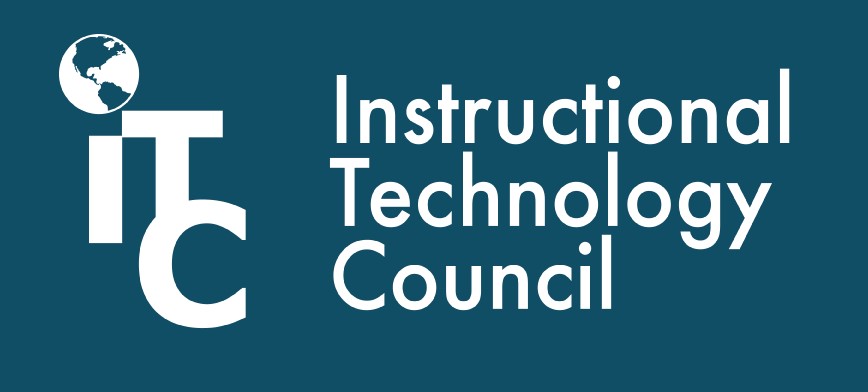Editor’s note: This article is provided by the Instructional Technology Council, an affiliated council of the American Association of Community Colleges.
Over the past several years, many community colleges have engaged in training sessions to increase awareness and cultivate an affinity for improving diversity, equity and inclusion (DEI) in the campus instruction, curriculum and culture. Initial efforts have focused on the existence of both conscious and unconscious bias and, admittedly, most of the training has been staff-centered.
The training has been valid and well-intentioned, but, in most cases, it hasn’t moved the needle on altering the culture or improving the sense of belonging essential to DEI. As with most professional development experiences, the presentations are strong on information but short on application.
Diversity/equity/inclusion addresses a major problem we have with many students. They fail to connect with the campus community and specifically with instruction. Feelings of isolation and feeling different become overwhelming and often result in the student stopping out.
Any student can experience this, but it is especially problematic for students of color, those from underrepresented populations and gender (depending on the program). Current curriculum can have equity gaps that reflect either conscious or unconscious bias in the selection of content, images used, the language used, the communication style and/or the strategies of student engagement.
The goal of DEI is to design curriculum and prepare faculty to foster a learning environment that makes the student feel like they belong – they are in the right place and feel relevant, appreciated and respected in the learning environment. This approach is adaptive and tailored to support a wide range of differences and to respect that students come from different backgrounds and different experiences.
Challenges in a virtual setting
Online courses can offer additional challenges for DEI. Students can feel more disconnected in a virtual learning environment. Traditional training has focused more on “how to” relating to set up an online class and less on student inclusivity and engagement. Also, many faculty fail to take advantage of the ability to more closely monitor individual students to know if/when they start to feel isolated. Depending on the discipline/program, more of the faculty may be part-time (which would mean they were less likely to attend professional development sessions on DEI on campus). Finally, faculty often use a “one size fits all” for curriculum development and fail to take into account the differences in their students.
The DEI effort is now beginning to move into the curriculum and instruction of online classes. This offers more promise for having measurable impact as it is more closely linked to faculty and students, but it offers challenges as well.
DEI is relevant regardless of the modality of instruction – all modalities are susceptible to both conscious and unconscious bias, after all. And as the popularity of online instruction increases, so too does the need to ensure that online instruction is welcoming and fosters a strong sense of belonging for students.
Online classes have always been about access – this represents the major strength of online classes and programs. Courses are available virtually 24/7 which has removed a major barrier to education (fixed days/times). However, online classes are often perceived as less engaging/less human scale than traditional instruction. One could extrapolate from this that more DEI barriers can exist as a result.
Strategies for success
There are six strategies that establish a framework for success in DEI course design, content selection, student engagement and student success (These come from the Iowa State University Center for Excellence in Teaching and Learning.):
Be accessible. There are three aspects of accessibility that are key here: accessibility for students with physical impairments that may create challenges for reading/seeing/hearing digital files and content, accessibility for students with psychological and/or learning differences that require certain accommodations such as extra time to process materials or additional exam time, and accessibility for students with limited access to computers or stable internet service.
Be flexible. A key aspect of equitable and inclusive teaching, in general, is recognizing and working with the diversity of our students, along multiple dimensions. Stay open to trying a few new things.
Be identity conscious. A critical feature of equity-minded teaching is the acknowledgment that our students are NOT all the same, that they come to us with sometimes vastly different experiences, and those experiences are often tied to their social identities (i.e., race, gender, sexual orientation, nationality, first-gen status, etc.).
Be proactive. A well-designed virtual course will build in a great deal of structure and accountability. In addition, designing for equity and inclusion means being particularly proactive about supporting students who may need some extra attention.
Be relational. While establishing supportive interpersonal relationships with students is one of the most fundamental tenets of effective teaching, it can be particularly important for students from traditionally underrepresented backgrounds.
Be transparent. To be inclusive means being mindful that not all of our students are well-versed in the hidden curriculum that faculty may take for granted. When we throw in the additional challenges of distance learning, we must work even harder to ensure that we are not making any unnecessary assumptions about what our students know and are able to do.
The transformative impact that DEI can have on curriculum and instruction is significant for online classes. This also complements who we are as community colleges (welcoming, inclusive, respectful, adaptive) and supports our goals (creating a welcoming environment, improving student success and completion, transforming our curriculum).
Although online classes offer several challenges, they also offer greater opportunities. It is easier to monitor a student’s progress in an online environment via analytics, and online course accessibility opens the college door wider.






